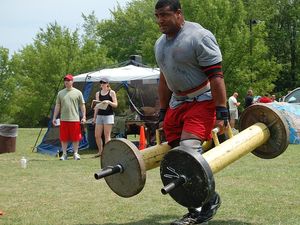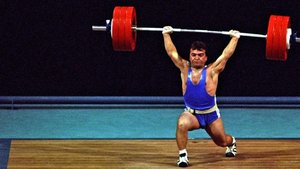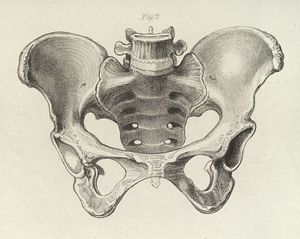How to build muscle fast is the elusive pursuit of many, causing thousands of people to perform rep after rep to no avail. Contrary to my previous article discussing the benefits and ways in which you can build strength without putting on any muscle whatsoever, I still believe there are reams of benefits to be had, building a little more muscle.
But why is it so difficult for some but not for others?
WHY?
Learn the science and theory.
Hypertrophy
Muscular hypertrophy (a.k.a building muscle mass) refers to the increase in muscle fibre size as a biological response to tissue stress and strain.
Although the general population tend to think building muscle mass is reserved for the special population of “vanity fuelled”, body obsessed individuals; it is something everyone should look to pursue in one scope or another.
Toning the Obesity Epidemic
When many people refer to “toning” (more appropriately named muscular definition) a muscle, they are referring to one of three possibilities.
- Decreasing body fat
- Increasing muscle mass
- A combination of the two
Now I get it, most people are mainly pursuing the number 1 spot on the list. And if you’re not, the news/health and fitness industry sure as hell tell you to.

The nationwide (if not Western-Worldwide) obesity epidemic is well known, with 67% of men and 57% of women being considered overweight according to a study by the Institute for Health Metrics and Evaluation in the UK. And although this study was significantly flawed using the BMI scale, you need only make a simple observation of the Western World today to notice that very few people are truly lean.
The numbers only get scarier over in the US.
Now, I’m not for a second saying that we shouldn’t look to decrease our bodyweight and body fat. It’s simply a matter of how it is achieved, with building muscle mass being a one of the best methods.
After all, why wouldn’t you want to go for number 3 on the list above?
Benefits of Building Muscle Mass
Building muscle mass can bring a plethora of benefits to both health and performance (not to mention looking better as a result) that many people aren’t even aware of.
- Increased resting metabolism and better body composition: Muscle is a metabolically active tissue, body fat is not. This means even when resting, possessing more muscle mass demands energy from your body, also known as your basal metabolic rate.
Extensive research has shown when comparing training interventions for improving body composition, of resistance training, cardio only and combined training groups, combined or resistance training only comes out on top (9, 25), regardless of the population tested (elderly, young, obese etc.).
- Greater glycolytic efficiency (decreasing resting blood glucose level) – Partly a mechanism for the above point, but this refers to blood glucose levels specifically, especially for those with type 2 diabetes. A prominent mismatch disease (a disease brought about by cultural evolution; 15) symptoms of type 2 diabetes and the ability to control blood glucose fluctuations has been markedly improve with the appropriate resistance training protocols (1, 3, 10).
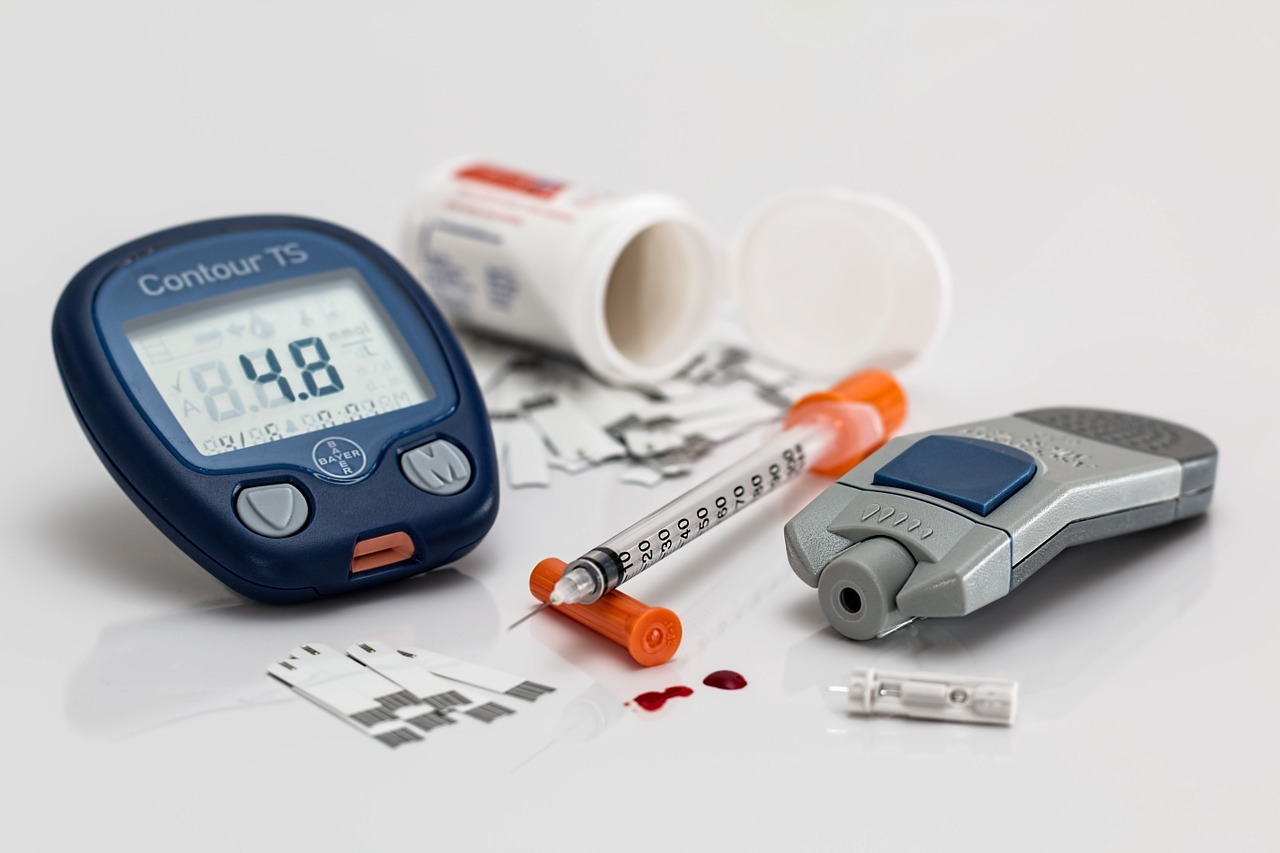
- Greater strength capacity – and this is obviously what we all want, don’t we? A larger muscle will always have the capacity to produce more force than a smaller one, provided it’s trained effectively to enhance neurological strength. This factor is literally of the main reasons weight categories exist in many sports.
ASCM Guidelines
The traditional guidelines provided by some of the most prestigious governing bodies in health and fitness state the following recommendations for building muscle mass:
- Sets = 3-5
- Reps = 8-12
- Load = 75-85% 1RM
Whilst these guidelines can bring about significant improvements when building muscle, as with most things, following generalised guidelines will more often than not bring about generalised results.
So, if you want average improvements, follow the guidelines above and you may very well see your muscles grow.
Or, you can learn the the 3 methods of how to build muscle fast, opening up a whole new world of possibilities to prevent stagnation/plateaus in your training and continue to develop towards the goal you have set out to achieve.
WHAT?
Learn the topic.
Training Volume
Of almost all of the training variables to be considered, how to build muscle fast is most influenced by training volume; with the training intensity selected largely being determined by which of the 3 methods below you want to utilise.
This link between building muscle mass and training volume, is the main reason why exercise programs, such as German Volume Training (GVT) became so popular, due to the sheer amount of reps and sets being performed.
This is also the precise reason why people are capable of lifting extremely heavy, generating huge amounts of mechanical tension without putting on too much muscle mass. Provided the total volume is relatively low, the hypertrophic stimulus won’t be too great to result in any significant growth.
1. Mechanical Tension A.K.A. ‘Lifting Heavy’
Gotta include this one first for obvious reasons. Lifting heavy isn’t only fun but has been shown to generate significant tension throughout the muscle, which is the key driver behind building muscle (5, 7), with mechanical tension alone being enough to trigger the release of mTOR, a key regulator of muscle protein synthesis.
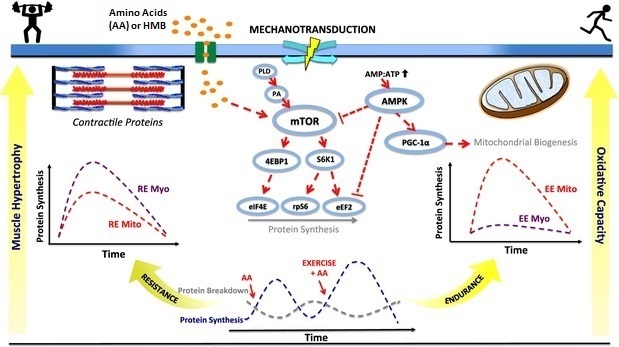
Mechanical tension has been shown to stimulate mechano-sensors within muscle fibres which are responsive to both the magnitude and duration of loading (16, 17). This mechanism brought about the term “time under tension” that many people believe to be the key for muscle growth. They wouldn’t be wrong, but the magnitude of the load is a huge factor to be considered.
The transmission of mechanical forces occurs longitudinally along the muscle and laterally through the matrix of the fascial tissue (21). In laymen terms, when lifting very heavy, the force spreads out throughout the entirety of the muscle, resulting in a much greater degree of tension when compared to lighter weight.
This entire process is referred to as mechano-transduction, which refers the conversion of mechanical forces into intracellular anabolic molecular events taking place (26).
For more reading on the individual cellular pathways and to truly nerd out, I strongly recommend reading “Science and Development of Muscular Hypertrophy” by Brad Schoenfeld to learn more.
2. Muscle Damage A.K.A. ‘Tearing the Muscle’
This is probably the most common method that people utilise with how to build muscle fast…and for good reason. Commonly referred to in the research as ‘exercise induced muscle damage (EIMD)’, as the name suggests, repeated contraction can result in damage to skeletal muscle on a cellular level (2, 4).
Although muscle damage can occur throughout any phase of an exercise, it is significantly greater within the eccentric/lowering phase of a movement (6).
Muscle damage may also feel cataclysmically damaging at first but repeat exposure to a similar stimulus decreases the pain of response, also referred to as the “repeated bout effect” (18). Therefore, exercise variation may be key to maximise this mechanism, but more on that later.
3. Metabolic Stress A.K.A The ‘Pump’/’Burn’
Ever been told that light weights, for higher reps helps tone?
Metabolic stress refers to the accumulation of lactic acid (and other by products such as inorganic phosphate and H+ ions) in response to fatiguing muscle contraction (22, 23). This almost always occurs within “lightweight high rep training” and many researchers claim metabolite building may be even more effective than mechanical tension (12).
Although sprint cyclists do also perform heavy strength training for the lower body, ever wondered why they all have such huge legs? . Metabolic stress is the primary reason.
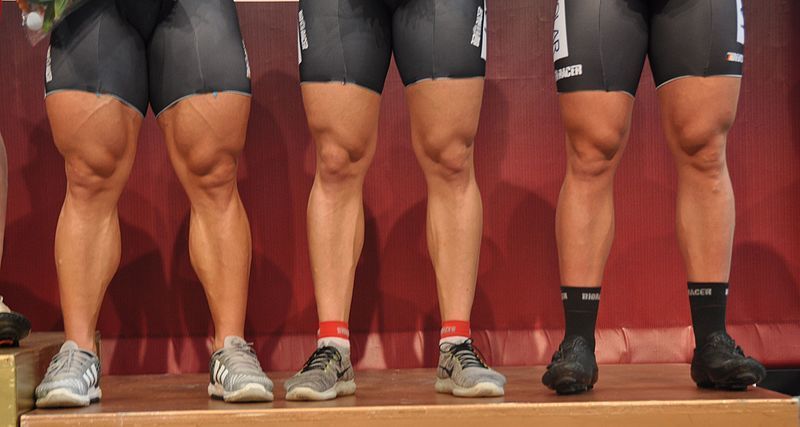
Metabolic stress is so effective, it forms the foundation of the latest training method to burst onto the scene known as occlusion or blood flow restriction (BFR) training, in which the returning flow of blood away from the muscle back to the heart is partially restricted.
Although the gains may not lost as long, research has actually shown BFR training to be more effective than high intensity training (14, 24) in the quest of how to build muscle fast.
There are a number of factors that mediate the metabolic stress response. Two interesting and highly influential mechanisms refer to increased fibre recruitment and cellular swelling.
Fibre Recruitment
According to the Henneman Size Principle, higher threshold motor units are progressively recruited in order of size not only in response to heavy loads, but also to maintain force output during repeated contractions (8). Although lifting really heavy for lower reps can increase relative strength, through increased fibre recruitment, lifting lighter loads to fatigue can have a similar effect on recruitment.
Although fatigability does influence recruitment, it’s clearly not as effective as heavier loads. Research by Suga et al. (22) found that only 31% of subjects displayed recruitment of fast twitch muscle fibres with 20% 1RM with restricted blood flow, compared to 705 of subjects when training at 65% 1RM, despite the same amount of work being done in both cases.
Cell Swelling
In part, this mechanism is actually as simple as the name suggests. The increased activity within the cell increases it’s “hydration”. As a result, this increases the pressure against the cell membrane and internal infrastructure known as the cytoskeleton. This pressure is perceived as a threat, which results in anabolic signalling to reinforce this support network, resulting in muscle growth (13, 19).
HOW TO BUILD MUSCLE FAST
Learn the implementation.
Mechanical Tension
Large Compound movements that allow you to lift the heaviest weight possible is important for how to build muscle fast.
In this situation a barbell tends to be preferred for sheer overload, when compared to dumbbells, cables etc. Whilst is still paramount to consider that you are loading the correct muscles (e.g. using your pectoralis major, deltoids and so on in the bench press), the goal should be to lift the heaviest weight, with safe and efficient technique.
Due to this, despite wanting to accrue volume in order to facilitate growth, you should be keeping well away from failure and reducing the reps per set and increasing the total number of sets, to maintain optimal technique.
Examples below include:
Bench Press: 5 sets of 5 @ 85% 1RM
Back Squat: 6 sets of 4 @ 87% 1RM
Deadlift: 8 sets of 3 @ 9% 1RM

*NOTE – The biggest mistake people make when looking how to build muscle fast – is totally obliterating a muscle within an inch of it’s life.
Research has consistently shown the existence of a “dose response” relationship (20), in which there is a threshold for the muscle building potential of muscle damage (11). Once you go beyond this point, you aren’t yielding any extra benefits…just prolonging your time to recover.
Metabolic Stress
And now we introduce the high rep, isolation OR compound work that many people crave. Isolation exercises tend to involve less complexity and significantly lower weight being used which means the risk of injury is significantly lower, allowing us to also safely train to failure.
Whilst again, the focus should always be maintaining optimal and efficient technique, this is where you can let loose and aim to, as many people put it, “destroy the muscle”, with an aim of getting the greatest pump and blood flow as possible.
Examples below include:
Cable Crossovers/Flys: 3 sets of 20 @45-55% 1RM
Leg Extensions: 3 sets of 15 @ 60% 1RM
Single Arm DB Row: 4 sets of 15 @ 63% 1RM.
Summary
- Increasing muscle mass is a huge beneficial factor to overall health, not just for aesthetic purposes.
- How to build muscle fast is regulated by 3 main processes in the body: mechanical tension, muscle damage and metabolic stress.
- Mechanical Tension – lift heavy, stay away from failure and stick to compound lifts.
- Muscle Damage – lift moderate to heavy for more reps, emphasise a change in length and introduce isolation work.
- Metabolic Stress – lift lighter weight, high rep work emphasising bloodflow and stick to isolation work (or exercises in which you can’t lift very heavy).
How to build muscle fast – you need to make sure you’re implementing a combination of all 3 and prioritising your recovery.
Enjoy!
Reference List
- Castaneda, C., Layne, J. E., Munoz-Orians, L., Gordon, P. L., Walsmith, J., Foldvari, M., … & Nelson, M. E. (2002). A randomized controlled trial of resistance exercise training to improve glycemic control in older adults with type 2 diabetes. Diabetes care, 25(12), 2335-2341
- Clarkson, P. M., Nosaka, K., & Braun, B. (1992). Muscle function after exercise-induced muscle damage and rapid adaptation. Medicine and science in sports and exercise, 24(5), 512-520
- Dunstan, D. W., Daly, R. M., Owen, N., Jolley, D., De Courten, M., Shaw, J., & Zimmet, P. (2002). High-intensity resistance training improves glycemic control in older patients with type 2 diabetes. Diabetes care, 25(10), 1729-1736
- Ebbeling, C. B., & Clarkson, P. M. (1989). Exercise-induced muscle damage and adaptation. Sports Medicine, 7(4), 207-234
- Fry, A. C. (2004). The role of resistance exercise intensity on muscle fibre adaptations. Sports medicine, 34(10), 663-679.
- Gibala, M. J., MacDougall, J. D., Tarnopolsky, M. A., Stauber, W. T., & Elorriaga, A. (1995). Changes in human skeletal muscle ultrastructure and force production after acute resistance exercise. Journal of Applied Physiology, 78(2), 702-708
- Goldberg, A. L., Etlinger, J. D., Goldspink, D. F., & Jablecki, C. (1975). Mechanism of work-induced hypertrophy of skeletal muscle. Medicine and science in sports, 7(3), 185-198Hornberger et al., 2006 – The role of phospholipase D and phosphoatidic acid in the mechanical activation of MTOR signalling in skeletal muscle.
- Henneman, E., Somjen, G., & Carpenter, D. O. (1965). Functional significance of cell size in spinal motoneurons. Journal of neurophysiology, 28(3), 560-580
- Ho, S. S., Dhaliwal, S. S., Hills, A. P., & Pal, S. (2012). The effect of 12 weeks of aerobic, resistance or combination exercise training on cardiovascular risk factors in the overweight and obese in a randomized trial. BMC public health, 12(1), 704
- Ibañez, J., Izquierdo, M., Argüelles, I., Forga, L., Larrión, J. L., García-Unciti, M., … & Gorostiaga, E. M. (2005). Twice-weekly progressive resistance training decreases abdominal fat and improves insulin sensitivity in older men with type 2 diabetes. Diabetes care, 28(3), 662-667
- Komulainen, J., Kalliokoski, R., Koskinen, S. O. A., Drost, M. R., Kuipers, H., & Hesselink, M. K. C. (2000). Controlled lengthening or shortening contraction-induced damage is followed by fiber hypertrophy in rat skeletal muscle. International journal of sports medicine, 21(02), 107-112.
- Kouzaki, M., Yoshihisa, T., & Fukunaga, T. (1997). Efficacy of tourniquet ischemia for strength training with low resistance. European Journal of Applied Physiology and Occupational Physiology, 77(1-2), 189-191.
- Lang, F. (2007). Mechanisms and significance of cell volume regulation. Journal of the American college of nutrition, 26(sup5), 613S-623S.
- Laurentino, G. C., Ugrinowitsch, C., Roschel, H., Aoki, M. S., Soares, A. G., Neves Jr, M., … & Tricoli, V. (2012). Strength training with blood flow restriction diminishes myostatin gene expression. Med Sci Sports Exerc, 44(3), 406-12.
- Lieberman, D. (2016). The Story of the Human Body.
- Martineau, L. C., & Gardiner, P. F. (2001). Insight into skeletal muscle mechanotransduction: MAPK activation is quantitatively related to tension. Journal of Applied Physiology, 91(2), 693-702
- Martineau, L. C., & Gardiner, P. F. (2002). Skeletal muscle is sensitive to the tension–time integral but not to the rate of change of tension, as assessed by mechanically induced signaling. Journal of biomechanics, 35(5), 657-663.
- McHugh, M. P. (2003). Recent advances in the understanding of the repeated bout effect: the protective effect against muscle damage from a single bout of eccentric exercise. Scandinavian journal of medicine & science in sports, 13(2), 88-97
- Schoenfeld, B. J. (2010). The mechanisms of muscle hypertrophy and their application to resistance training. The Journal of Strength & Conditioning Research, 24(10), 2857-2872
- Schoenfeld, B. J., Ogborn, D., & Krieger, J. W. (2017). Dose-response relationship between weekly resistance training volume and increases in muscle mass: A systematic review and meta-analysis. Journal of sports sciences, 35(11), 1073-1082
- Street, S. F. (1983). Lateral transmission of tension in frog myofibers: a myofibrillar network and transverse cytoskeletal connections are possible transmitters. Journal of cellular physiology, 114(3), 346-364.
- Suga, T., Okita, K., Morita, N., Yokota, T., Hirabayashi, K., Horiuchi, M., … & Tsutsui, H. (2009). Intramuscular metabolism during low-intensity resistance exercise with blood flow restriction. Journal of Applied Physiology, 106(4), 1119-1124.
- Tesch, P. A., Colliander, E. B., & Kaiser, P. (1986). Muscle metabolism during intense, heavy-resistance exercise. European journal of applied physiology and occupational physiology, 55(4), 362-366.
- Yasuda, T., Abe, T., Sato, Y., Midorikawa, T., Inoue, K., Ryushi, T., & Ishii, N. (2005). Muscle fiber cross-sectional area is increased after two weeks of twice daily KAATSU-resistance training. International Journal of KAATSU Training Research, 1(2), 65-70
- Yavari, A., Najafipoor, F., Aliasgarzadeh, A., Niafar, M., & Mobasseri, M. (2012). Effect of aerobic exercise, resistance training or combined training on glycaemic control and cardiovascular risk factors in patients with type 2 diabetes. Biology of Sport, 29(2), 135
- Zou, K., Meador, B. M., Johnson, B., Huntsman, H. D., Mahmassani, Z., Valero, M. C., … & Boppart, M. D. (2011). The α7β1-integrin increases muscle hypertrophy following multiple bouts of eccentric exercise. Journal of Applied Physiology, 111(4), 1134-1141.



